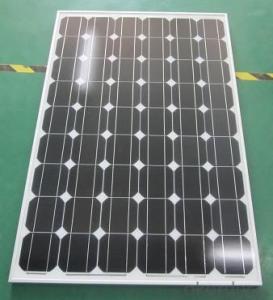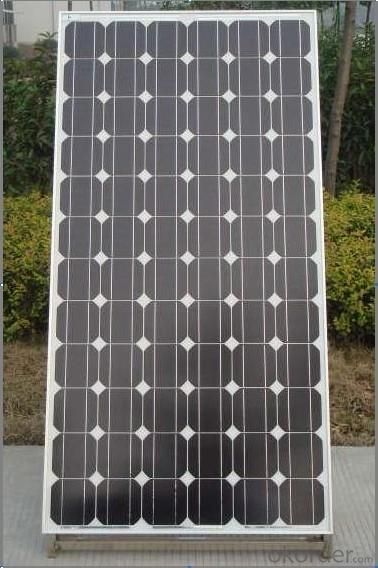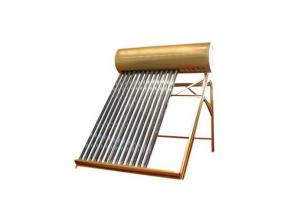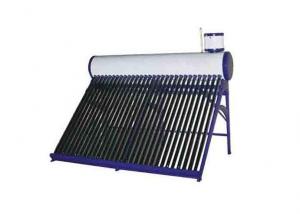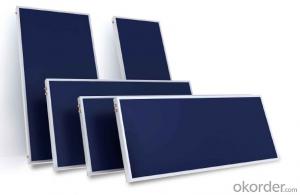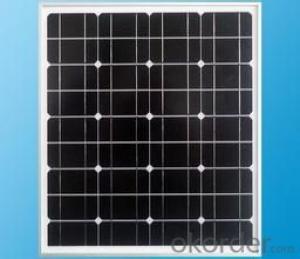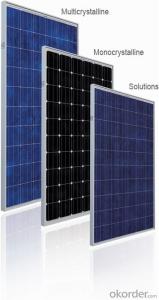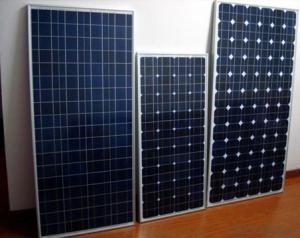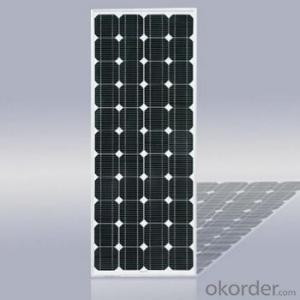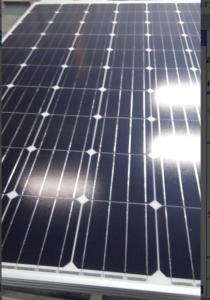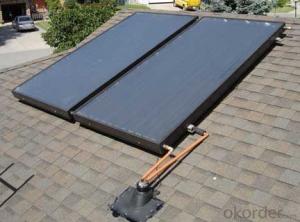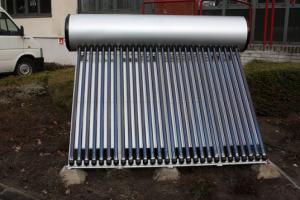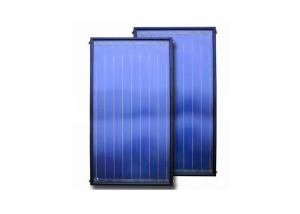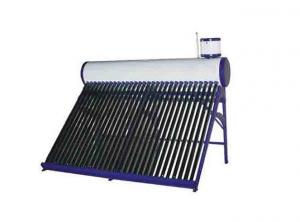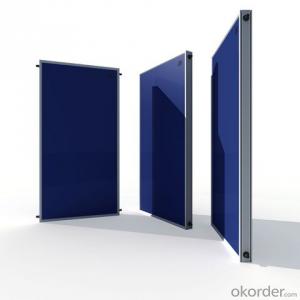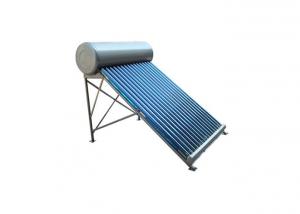Sunearth Solar Collectors - CNBM Brand Solar Monocrystalline Series Panel
- Loading Port:
- Tianjin
- Payment Terms:
- TT OR LC
- Min Order Qty:
- 1 pallet
- Supply Capability:
- 100000000 pallet/month
OKorder Service Pledge
OKorder Financial Service
You Might Also Like
Solar Monocrystalline Series Panels
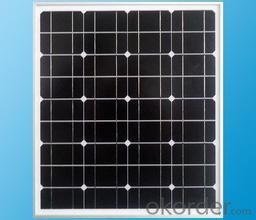
Product Description:
Introduction of Solar Monocrystalline Series Panels
CNBM Solar photovoltaic (PV) Panel is designed for large electrical power requirements. It is the optimal choice for both on-grid and off-grid power systems. CNBM Solar panel offers high performance of power per square foot of solar array. Monocrystalline silicon(c-Si): often made using the Czochralski process. Single-crystal wafer cells tend to be expensive, and because they are cut from cylindrical ingots, do not completely cover a square solar cell module without a substantial waste of refined silicon. Hence most c-Si panels have uncovered gaps at the four corners of the cells.
Characteristics of Solar Monocrystalline Series Panels
I Solar Cell : High efficiency crystalline solar cell. Even if under the weak light, the solar module can produce maximum power output.
II Tempered glass (toughened glass): Anti-reflecting coating and high transmission rate glass increase the power output and mechanical strength of solar module.
III EVA and TPT: Using high quality EVA and TPT to prevent destroying and water.
IV AI frame: Without screw, corner connection. 6 holes on the frame can be installed easily.
V Junction box: Multi function junction box with water proof.
VI Long lifetime: ≥25 years; Less power decrease
VII Good performance of preventing from atrocious weather such as wind and hails.
VIII Resisting moisture and etching effectively, not effected by geology.
Standard Test Conditions of Solar Monocrystalline Series Panels
The opto-electrical specifications shown below are stabilized values being measured at Standard Test Conditions, Irradiance: 1000W/m2, Spectrum: AM1.5 at 25°C, The info below is subject to manufacturing tolerances. Where appropriate minutes of measurement are available and are used for the dimensioning of the installation.
Advantages of Solar Monocrystalline Series Panels
• CNBM Solar performance guarantees for 25 years
• 12 years guarantee for workmanship
• Timeliness of delivery
CNBM International Corporation's products including Monocrystalline Solar Panel, Polycrystalline Solar Panel have received and enjoyed famous reputation in many countries and regions in the world .As a solar panel supplier in China, we strive to provide our customers with excellent service, superior products and unmatched value.
Characteristics of Solar Monocrystalline Series Panels
Max Power Voltage Vmp (V) | 18.4V | 17.6V |
Max Power Current Imp (A) | 6.52A | 7.39A |
Open Circuit Voltage Voc (V) | 23.0V | 22.2V |
Short Circuit Current Isc (A) | 6.97A | 7.90A |
Max Power Pm (W) | 120W | 130W |
Temperature Coefficient of Cells
NOCT | 47℃±2℃ |
Temperature Coefficients of Isc (%/℃) | 0.064 |
Temperature Coefficients of Voc (%/℃) | -0.33 |
Temperature Coefficients of Pmp (%/℃) | -0.45 |
Mechanical Data Solar Monocrystalline Series
Power | 120W/130W |
Dimension | 1190/1470×670×30mm |
Weight | 9.5kg/11.7kg |
Tolerance | ±3% |
The dimension of the modules can be changed according to the demand of clients
Limits
Operating Temperature | –40 °C to +85°C |
Storage Temperature | –40 °C to +85°C |
Max System Voltage | 700V |
Guarantee Solar Monocrystalline Series Panels
Products Guarantee | 10 yrs free from defects in materials and workmanship |
Performance Guarantee | No less than 90% within 10yrs and no less than 80% within 25yrs |
Certificates | IEC, ISO, TUV, CE |
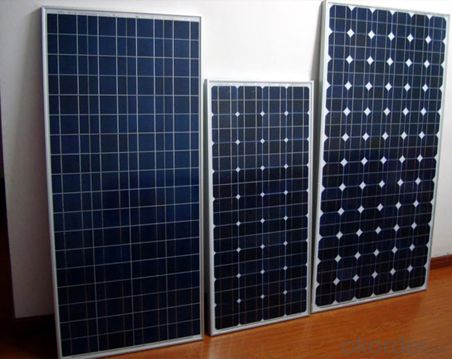
FAQ
I..Will you focus on the safety of the goods during transportation?
Yes, Safety of the cargo is the primary element that we would consider on transportation.
II..How would guarantee the quality will meet the requirements of your clients?
Before shipment, we will have inspection for each batch of goods.
III..What certificates do you have?
IEC,UL,TUV,CSA,etc.
IV..Can you do OEM according to clients’ requirements?
Yes, we have our own brand while we can provide OEM service.
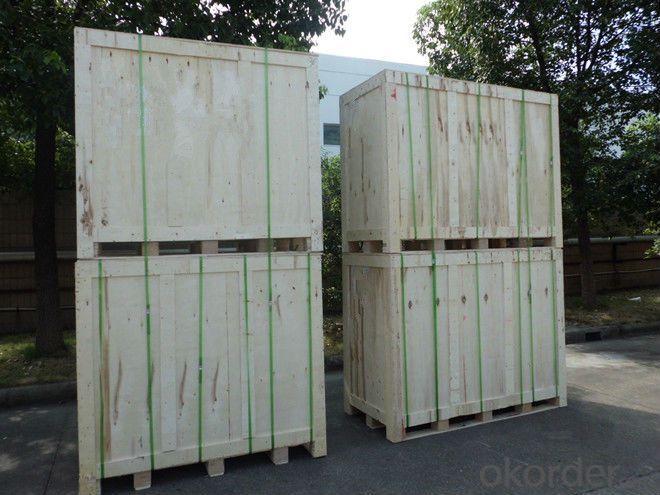
- Q: What is the effect of dust storms on solar collectors?
- Dust storms can have a negative effect on solar collectors as they can block or reduce the amount of sunlight reaching the collectors. This can result in a decrease in the efficiency and performance of the solar collectors, leading to a reduction in power output. Additionally, the accumulation of dust on the surface of the collectors can also hinder their ability to absorb sunlight effectively, further impacting their performance. Regular cleaning and maintenance may be necessary to mitigate the impact of dust storms on solar collectors.
- Q: What is the weight of a solar collector?
- The weight of a solar collector can vary depending on its size and design. On average, smaller residential solar collectors may weigh around 100-200 pounds, while larger commercial or industrial collectors can weigh several thousand pounds.
- Q: Are there any drawbacks to using solar collectors?
- Yes, there are a few drawbacks to using solar collectors. Firstly, the initial installation cost of solar collectors can be quite high, which may deter some individuals or organizations from adopting this technology. Additionally, the efficiency of solar collectors can vary depending on factors such as weather conditions and the angle at which they are installed, resulting in fluctuations in energy production. Furthermore, solar collectors require a relatively large area for installation, making them less suitable for urban areas with limited space. Lastly, the production and disposal of solar panels can have environmental impacts, as they require certain raw materials and manufacturing processes. However, despite these drawbacks, the benefits of using solar collectors, such as reduced carbon emissions and long-term cost savings, often outweigh these concerns.
- Q: How do solar collectors affect water conservation?
- Solar collectors can have a positive impact on water conservation in several ways. Firstly, solar collectors use the sun's energy to heat water, which reduces the reliance on traditional water heating methods that require large amounts of water. This means that less water is needed to be extracted from natural sources such as rivers, lakes, or underground aquifers. Furthermore, solar collectors often employ closed-loop systems that recycle and reuse the heated water. This means that once the water is heated, it can be stored and used multiple times, reducing the overall water consumption. This is particularly beneficial in areas where water scarcity is a concern. Additionally, solar collectors can be combined with other water conservation techniques such as rainwater harvesting. By collecting rainwater and using solar collectors to heat it, the need for using potable water for various purposes such as irrigation or washing can be minimized, thus conserving water resources. Moreover, solar collectors can also be used in desalination processes to convert seawater into fresh water. This is especially valuable in coastal regions where freshwater resources are limited. By using solar energy to power the desalination process, less energy from conventional sources like fossil fuels is required, resulting in reduced water consumption and environmental impact. In summary, solar collectors contribute to water conservation by reducing the reliance on water-intensive heating methods, reusing heated water, combining with rainwater harvesting, and facilitating the desalination of seawater. These sustainable practices help to preserve water resources and promote a more efficient and environmentally friendly use of water.
- Q: Can solar collectors be used in automotive manufacturing?
- Solar collectors have the potential to be utilized in the automotive manufacturing sector. These devices have the ability to capture sunlight and convert it into usable energy, typically in the form of heat or electricity. Within the context of automotive manufacturing, solar collectors can provide renewable energy for various processes and operations. One way in which solar collectors can be applied in automotive manufacturing is by generating electricity. Large photovoltaic arrays can be installed on the roofs or surrounding areas of automotive manufacturing facilities, allowing them to harness solar energy and convert it into electrical power. This generated electricity can then be used to operate equipment and machinery in the manufacturing process, reducing reliance on traditional energy sources and minimizing carbon emissions. Solar collectors can also be utilized for heating purposes in automotive manufacturing. By using solar thermal collectors, sunlight can be captured and converted into heat. This heat can then be used for a variety of heating applications, including space heating, water heating, or even heating specific manufacturing processes. Incorporating solar collectors for heating purposes can help reduce the consumption of fossil fuels or electricity, resulting in cost savings and positive environmental impacts. Furthermore, solar collectors can be integrated into the design of electric vehicles (EVs) themselves. By installing solar panels on the roofs or other areas of EVs, sunlight can be captured and converted into electricity. This electricity can then be used to power auxiliary systems within the vehicle. While the electricity generated from these on-board solar collectors may not be sufficient to fully power the vehicle, it can help decrease the energy consumption from the main battery and increase the overall efficiency of the EV. To summarize, solar collectors offer a sustainable and renewable energy solution for the automotive industry. Whether it is through generating electricity for manufacturing processes, providing heat for various applications, or integrating into electric vehicles, solar collectors have the potential to play a significant role in automotive manufacturing.
- Q: Are there any restrictions or regulations for installing solar collectors in certain areas?
- Yes, there can be restrictions or regulations for installing solar collectors in certain areas. These restrictions can vary depending on the local government and regulations in place. Some common restrictions include zoning laws, building codes, and homeowner association rules. Zoning laws may dictate where solar collectors can be installed, such as setbacks from property lines or height restrictions. Building codes may require specific permits or inspections for solar collector installations to ensure they meet safety and structural requirements. Homeowner associations may have their own rules regarding the aesthetics or placement of solar collectors. Additionally, some areas may have specific regulations for historic districts or protected landscapes that could restrict the installation of solar collectors. It is important for individuals or businesses interested in installing solar collectors to research and understand the specific restrictions or regulations in their area before proceeding with installation.
- Q: Can solar collectors be used in disaster-resilient infrastructure?
- Yes, solar collectors can be used in disaster-resilient infrastructure. By harnessing the power of the sun, solar collectors can provide a reliable and sustainable source of energy even during times of disaster or grid failures. This can help ensure that critical infrastructure, such as hospitals, emergency shelters, and communication systems, remain operational and resilient in the face of natural disasters or other emergencies. Additionally, solar collectors can reduce the reliance on traditional energy sources and contribute to a more sustainable and environmentally friendly infrastructure.
- Q: What is the lifespan of a solar collector?
- The lifespan of a solar collector can vary depending on the type, quality, and maintenance of the system. However, on average, a well-maintained solar collector can last for 20 to 30 years or more.
- Q: What is the typical installation process for solar collectors?
- The typical installation process for solar collectors involves several steps. First, a site assessment is conducted to determine the best location for the collectors, taking into account factors such as available sunlight and shading. Next, the necessary permits and paperwork are obtained. The collectors are then mounted on the roof or ground, securely fastened and angled to maximize sun exposure. Electrical wiring is connected to the collectors, which are then linked to an inverter that converts the DC power generated by the sun into usable AC power. Finally, the system is tested and commissioned to ensure it is functioning properly.
- Q: Can solar collectors be used for snow melting?
- Yes, solar collectors can be used for snow melting. Solar collectors can generate heat, which can be used to melt snow and ice on surfaces such as driveways, walkways, and roofs. This can help prevent accumulation of snow and improve safety during winter months.
Send your message to us
Sunearth Solar Collectors - CNBM Brand Solar Monocrystalline Series Panel
- Loading Port:
- Tianjin
- Payment Terms:
- TT OR LC
- Min Order Qty:
- 1 pallet
- Supply Capability:
- 100000000 pallet/month
OKorder Service Pledge
OKorder Financial Service
Similar products
Hot products
Hot Searches
